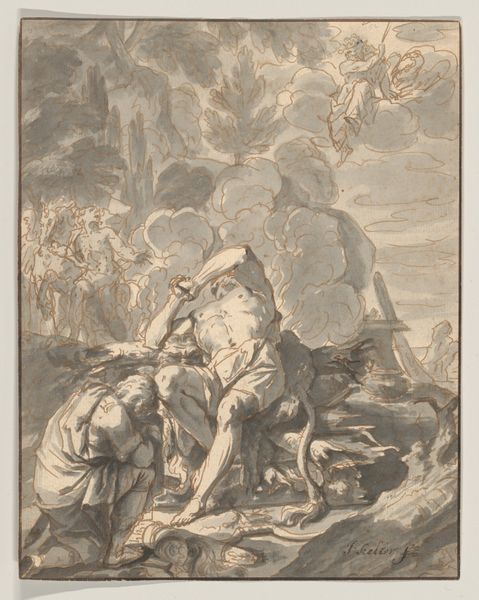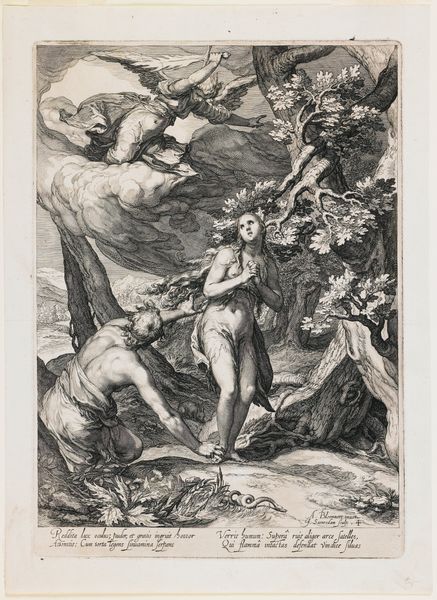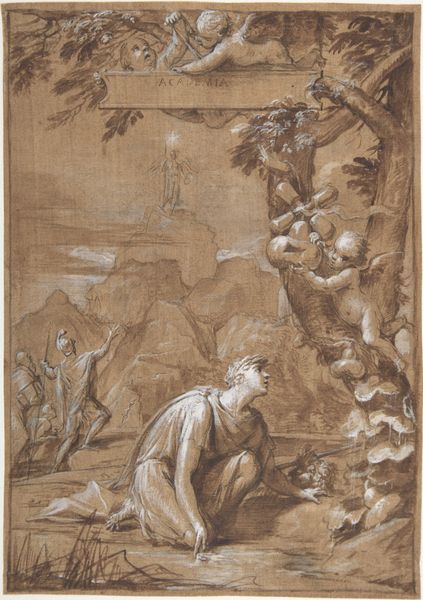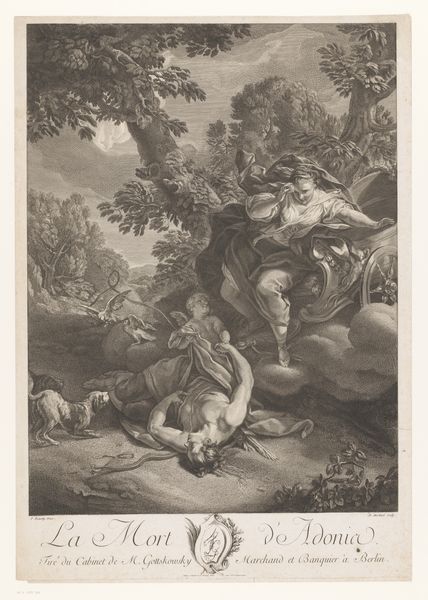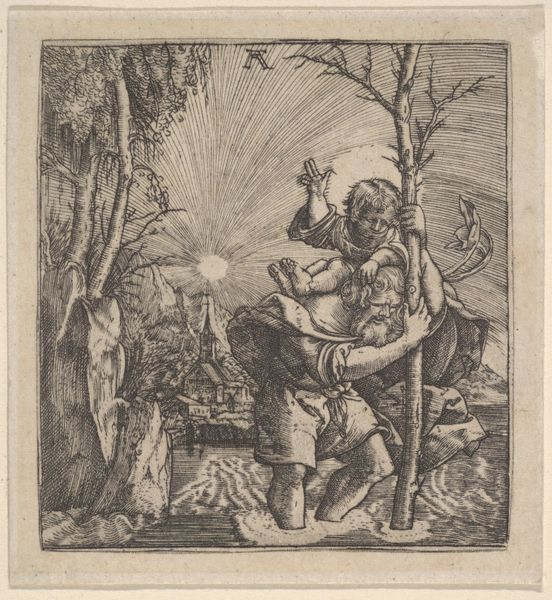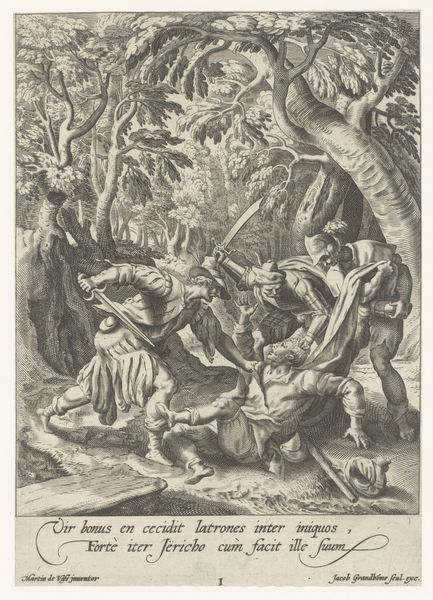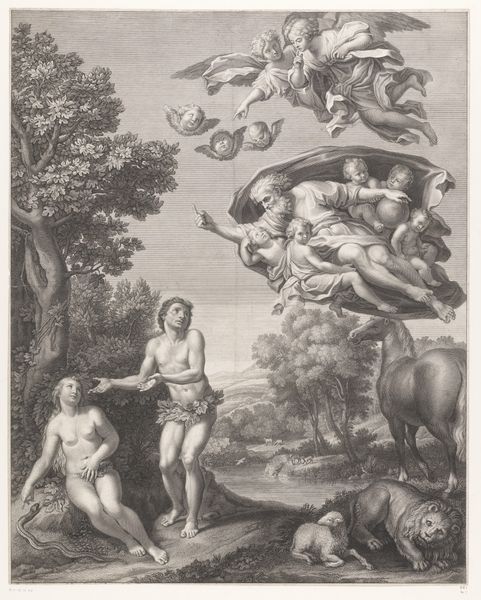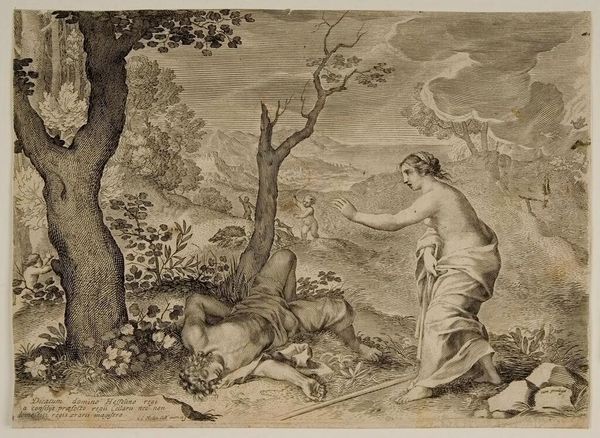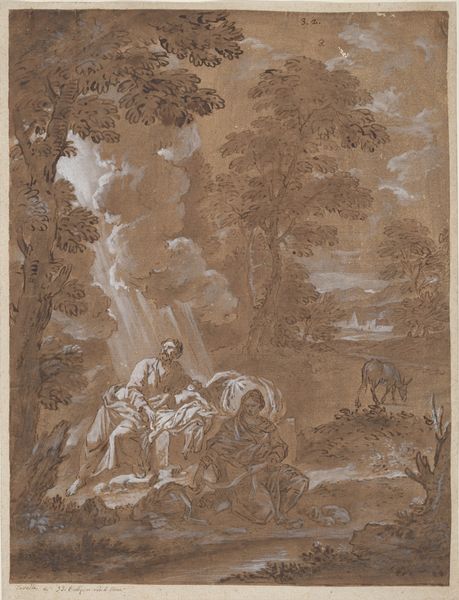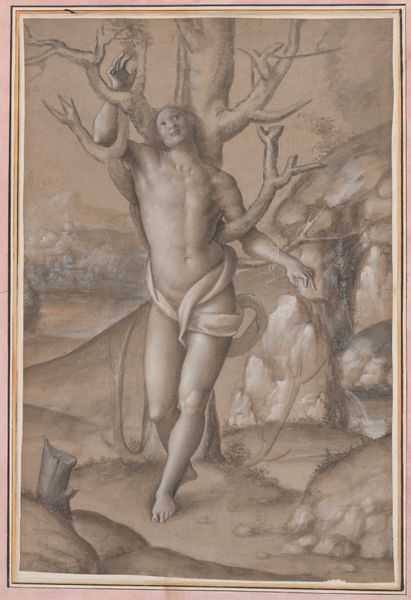
oil-paint
#
narrative-art
#
baroque
#
oil-paint
#
landscape
#
figuration
#
history-painting
#
expressionist
Dimensions: 54 3/4 × 35 7/16 in. (139 × 90 cm)
Copyright: Public Domain
Curator: Pier Francesco Mola's "Cain Slaying Abel," created between 1650 and 1652, depicts the biblical story within a dynamic landscape. What are your immediate thoughts on this piece? Editor: Well, the most striking aspect is certainly the dramatic tension, wouldn’t you agree? There’s something unsettling about the rough materiality of the figures and the dark, churning sky behind them, suggesting the violence of this scene in a very visceral way. The earthy pigments contribute to this feeling. Curator: Absolutely. This piece acts as a potent visual interpretation of a foundational narrative of fratricide, pushing us to analyze patriarchal structures and inherited traumas in the genesis story. Cain’s motivations—feelings of injustice, displacement—resonate even today when thinking about conflicts related to resource access and divine favor across cultures. Editor: Exactly. And Mola’s choice to emphasize Cain's physicality underscores how the conditions of their labor—agriculture versus shepherding—might have shaped their social positions, inevitably contributing to tensions and, ultimately, Cain's violent response, using such a rudimentary tool of labour. What was at his hand at that time? A branch? A tool? It doesn't appear like a sophisticated weapon! Curator: Interesting observation. We must also consider this artwork within the context of its reception in the Baroque period. It seems to embody anxiety about social order at the time. Also, in religious art it could play into anxieties about personal moral responsibility as understood during the Counter-Reformation. Editor: Yes, and in the technique and execution there’s almost a rejection of refined Renaissance classicism here. Mola’s brushwork feels almost urgent, the pigments themselves feel coarse and unblended in places. Note the tension between the background of nature’s supposed calm vs the action upfront? What kind of labour has created these colours? What of the frame that contains this painting now? Is the labor which framed it, less worthy than that of the creation? Curator: Considering how narratives and symbolic actions reflect our ongoing exploration of the concepts of justice, ethics, and conflict resolution through various artistic renderings such as this one, one hopes such dark past will prompt the creation of a brighter future. Editor: Precisely. Examining "Cain Slaying Abel" through a material lens allows us to connect the social and production dynamics that resonate deeply even today, reminding us of the consequences inherent in choices concerning labour, resource access, and the inherent, dangerous, potential of our own material needs.
Comments
No comments
Be the first to comment and join the conversation on the ultimate creative platform.
